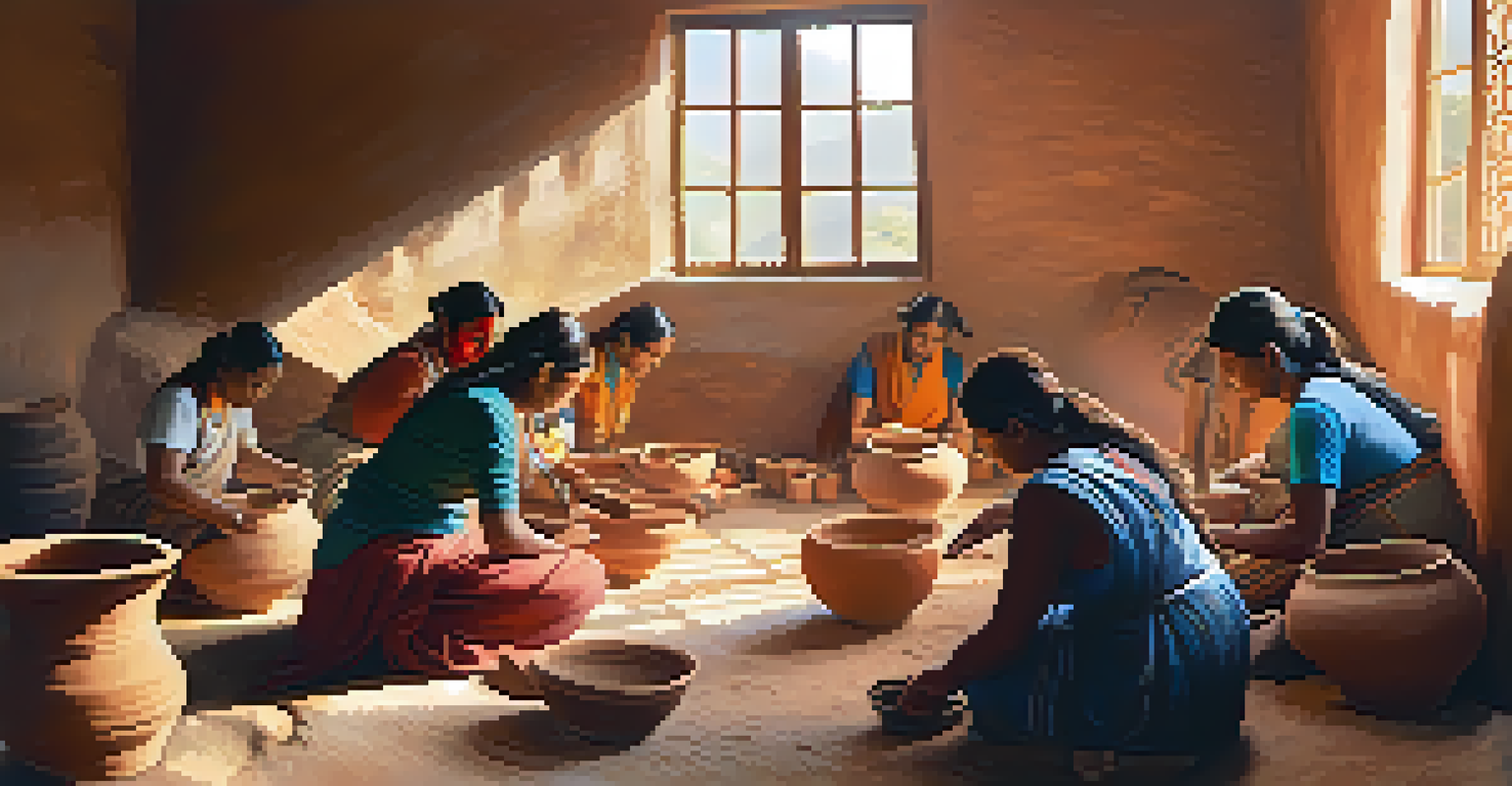Community-Led Tourism in Peru: A Model for Sustainability

Understanding Community-Led Tourism in Peru
Community-led tourism (CLT) in Peru focuses on empowering local communities to manage and benefit from their tourism resources. This approach encourages residents to share their culture and heritage while ensuring that tourism development aligns with their values. As a result, visitors get an authentic experience that isn't just about sightseeing, but also about connecting with the people and their stories.
The best way to find yourself is to lose yourself in the service of others.
In Peru, this model takes various forms, from guided tours led by local artisans to immersive homestays in indigenous villages. For example, in the Sacred Valley, local women offer weaving workshops that not only showcase traditional techniques but also provide an income for their families. This creates a win-win situation where travelers gain insights into local life, and communities thrive economically.
The essence of CLT is rooted in collaboration and respect. By involving community members in decision-making, they can voice their needs and priorities. This participation not only enhances the visitor experience but also fosters a sense of ownership among locals, encouraging them to protect their environment and culture.
Benefits of Community-Led Tourism for Local Communities
One of the most significant benefits of community-led tourism is economic empowerment. When locals take charge of their tourism initiatives, they can direct funds back into their communities, enhancing infrastructure, education, and healthcare. This financial autonomy helps reduce poverty and improves the overall quality of life.

Moreover, CLT fosters cultural preservation. As communities share their traditions, they become more aware of their heritage's value, leading to a renewed interest in maintaining cultural practices. For instance, traditional festivals and ceremonies are often revitalized, offering tourists a chance to participate while allowing locals to celebrate their identity.
Empowering Local Communities
Community-led tourism in Peru focuses on empowering locals to manage tourism, ensuring they benefit culturally and economically.
The model also promotes environmental sustainability. When communities are invested in tourism, they are more likely to prioritize conservation efforts. This can lead to initiatives like protecting natural habitats or promoting eco-friendly practices, ensuring that the beautiful landscapes of Peru remain intact for future generations.
Challenges Facing Community-Led Tourism in Peru
Despite its many advantages, community-led tourism in Peru faces several challenges. One major issue is the lack of access to resources and training for local communities. Often, they may not have the skills or knowledge necessary to market their offerings effectively, limiting their potential for growth.
Traveling – it leaves you speechless, then turns you into a storyteller.
Additionally, there can be tensions between traditional practices and the influx of tourists. Communities must strike a balance between showcasing their culture and maintaining authenticity. For instance, if a local tradition becomes too commercialized, it may lose its significance, leading to disillusionment among residents.
Competition with larger, established tourism operators can also pose a threat. These companies may have more resources for marketing and infrastructure, making it difficult for community-led initiatives to gain visibility. Ensuring that local voices are heard and valued in the tourism landscape is essential for the success of CLT.
Successful Examples of Community-Led Tourism in Peru
One standout example of successful community-led tourism in Peru is the community of Chinchero, located near Cusco. Here, local families welcome visitors into their homes, offering traditional meals and insights into their weaving techniques. This not only provides tourists with a unique experience but also empowers families economically.
Another impressive model is the community of Q'ewar, which focuses on sustainable practices and cultural preservation. This collective of women artisans produces handmade textiles while educating tourists about their traditions. Their commitment to sustainability has attracted visitors interested in ethical tourism, showcasing how CLT can align with modern consumer values.
Economic and Cultural Benefits
This tourism model fosters economic empowerment and cultural preservation, enhancing quality of life and community identity.
These examples demonstrate how community-led initiatives can thrive when locals are empowered, creating a ripple effect that benefits the entire region. By sharing their stories and skills, they not only preserve their cultures but also attract travelers eager for authentic connections.
The Role of Technology in Community-Led Tourism
Technology plays a pivotal role in enhancing community-led tourism in Peru. With the rise of social media, local communities can showcase their offerings to a global audience, attracting more visitors than ever before. This digital presence helps them tell their unique stories and promote their cultural heritage.
Moreover, technology can facilitate better communication between tourists and local hosts. Platforms like Airbnb and specialized tour apps enable travelers to book experiences directly with community members, ensuring that revenue flows back to the local economy. This direct connection helps foster relationships built on respect and understanding.
However, it's essential for communities to receive training to use these technologies effectively. By equipping locals with digital skills, they can leverage online tools to enhance their visibility and marketing efforts. This not only boosts tourism but also empowers communities to take charge of their narrative.
The Future of Community-Led Tourism in Peru
The future of community-led tourism in Peru looks promising, with increasing interest from travelers seeking authentic experiences. As awareness of sustainable travel grows, more tourists are drawn to destinations that prioritize local culture and environmental stewardship. This trend aligns perfectly with the principles of CLT, offering communities an opportunity to thrive.
Partnerships between local communities, NGOs, and government bodies can further bolster this movement. By working together, they can create training programs, marketing strategies, and infrastructure improvements that support community-led initiatives. This collaborative approach ensures that tourism benefits everyone involved.
Technology Enhances Visibility
Leveraging technology allows local communities to promote their offerings, connect directly with tourists, and gain economic benefits.
As we look ahead, it's crucial to continue advocating for responsible tourism practices that honor local traditions and promote sustainability. By supporting community-led tourism, we not only enrich our travel experiences but also contribute to the well-being of the communities we visit.
How Travelers Can Support Community-Led Tourism
Travelers play a vital role in the success of community-led tourism in Peru. By choosing to book experiences directly with local guides or staying in community-run accommodations, visitors can ensure that their money supports the people who offer them authentic experiences. This conscious decision makes a significant difference in the lives of local residents.
Additionally, travelers can engage with local communities by participating in workshops, cultural exchanges, and volunteering opportunities. These interactions not only enrich the travel experience but also foster mutual understanding and respect. It's about building relationships that extend beyond the typical tourist experience.

Finally, sharing positive experiences on social media and travel blogs can help raise awareness about community-led tourism. By highlighting the stories of local hosts and their initiatives, travelers can inspire others to seek similar experiences, creating a ripple effect that benefits communities across Peru.